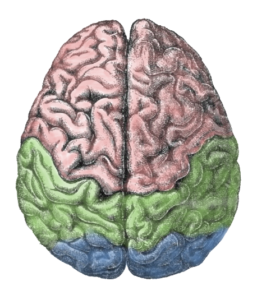Neuro-Linguistic Programming (NLP), Cognitive Behavioral Therapy (CBT) Psychodynamics & My Marriage Proposal Experiment!

Most People Only Read Headlines Or Titles!
A marriage proposal experiment was conducted on social media to invalidate a pervasive hypothesis that people’s collective motivation to share interesting, valuable and worthy information based solely on headlines/titles, without apathy for content is an attention span phenomena. This erroneous belief is unsound; this theory is solidified through deceiving satirical political headlines with gibberish content that factors in again—the concentration problem existing within interpersonal activities. However, this impression on fleeting collective human behavior derives from NLP! Impermissible unconscious activities interrupt neurological processes.
Conclusions Based On Headlines & Titles
Over 65% of users draw conclusion based on headlines/titles; the subtitles or articles are seldom referenced or read to surmise an argument, support a decision, debate a viewpoint, or elicit a support or congratulation. This analysis was conducted on social media using reliant, high-focused like-minded proficient and competent experts, and complacent, negligent lackadaisical users—-both groups forwarded their congratulation when the experimental post was shared. Users were partitioned into three categories; polar extremity groups, which is a dichotomy between focused users vs wandering neglect lackadaisical minds. The third group were an equilibrium between all users combined—-which is the typical, standard baseline users; average concentration, standard complacency. The post was shared on April Fools Day —- “April Fools!” was stated saliently In the post; aggregating almost 200 likes and over 180 comments in just a few hours, with a 99.9% congratulation. Invariably!
Online attention span and concentration deficiency emerges from three interdependent areas——CBT, NLP & Psychodynamics.
Neuro-Linguistic Programming (NLP); is the correlation between neurological processes, linguistic models, behavioral patterns and the human experience. Anchor is a metaphor in NLP associated with internal and external responses; such as reference points that stabilizes a physiological, psychological or emotional state. Trigger is another term attributed to experiences effecting mood and calling forth these behavioral feelings. These phenomena effect sensory modality such as auditory (hearing), optical (sight), olfactory (smell), tactile (touch), and gustatory (taste), including kinesiology ——- kinesiology is not a sensory modality but the mechanics body movements; (anatomical NLP).
Cognitive Behavioral Therapy (CBT); deals with conscious awareness, treatment and resolution to dysfunctional patterns of thoughts, behavior and emotions we negate. Where as NLP acknowledges the interrelation influences; NLP addresses unconscious phenomena and CBT focuses on conscious resolution. CBT, is referenced in this article in regards to treatment and resolution between interpersonal communication is a complex phenomena that requires interdependent elements.
Psychodynamics; deals with the psychological forces underlying human behavior; it studies the interrelationship between the unconscious, the conscious, emotions, personality and motivation. Aforementioned —— Impermissible unconscious activities interrupt neurological processes; meaning, anchors triggered through sensory modality occurs unconsciously and elicit fleeting emotional responses…It’s the neurolinguistic programming element effecting sensory modality on an unconscious level, causing deflecting attention span and content concentration.
Neuro-Linguistic Programming (NLP), Psychodynamics & Linguistic Models
Let’s analyze the neurological processes of NLP, the psychodynamical aspect of emotion, personality and motivation——-and linguistic etymology. The word “pathy” is the vortex of this article because it denote “feelings,” derivational morphological prefixes such as——- apathy, empathy, sympathy, antipathy, unempathy etc—-are combinatory forms eliciting the different aspect, shapes, forms and characteristics of emotions.
Empathy, Sympathy, Compassion, Apathy, Antipathy
Empathy: attributed to shared emotions, the ability to feel the mood in relation to the other.
Sympathy: the expression of feeling and understanding toward misfortune, circumstances or situation; apathy is a lack of interest or indifference.
Compassion: sympathy are used interchangeably because their emotional qualities are similar; however, sympathy is inner compassion, compassion is outer sympathy.
Example; I have sympathy for other; I have a compassion for mankind. The subtle difference is—-compassion shade of nuances carry a universal sensibility; whereas, sympathy has a more enclosed usage.
Apathy: seems to contrast empathy in the lack of interest towards others, but it’s actually unempathetic, which is the opposite of empathy—
Antipathy: which is contextually aversion. Unconscious processes ignite these shades of emotions, deflecting users away from content and triggering an instantaneous reaction based on headlines/titles.
The results are ——-
The Ramification Effect: deriving from unintended interpersonal consequences, and ——
The Echo Chamber Effect: where collective ideologies are uncritically compartmentalized and confirmation biases are agreed upon within close-knit social groups.
The Echo Chamber Ramification Effect: thrive because challenging a collective consensus is difficult; Intrinsic psychological and sociological models are built when evidence to substantiate ideas gain affirmation through social cliques, usually causing unintended collective consequences.
Sensory Modality & Linguistic Models
The dispirited nature between content engagement and sharing is not an attention span issue, it’s unconscious neurolinguistic-linguistic programming, and the correlation between these neurological processes, linguistic models, and emotions deriving from behavioral patterns and human experiences! These anchors are elicited through lexical and syntactical headlines that trigger our empathy, sympathy, apathy, antipathy, unempathy, affinity and compassion etc! One preceding factor is a mixture of sensory modality and linguistic models; lexical-optical triggers!

The Moral & Ethics Of My Experiment!
The unconditional love, affinity and compassion expressed towards the union of two is beyond jurisdiction; I’m an undeserving benefactor of such immeasurable support; my gratitude is beyond comprehension— and my appreciation defies description! Perceiving my analysis as morally and unethically vile or experimentally distasteful is mundane. This experiment demystifies a proliferating fallacy, an agreed upon misconception, that online attention span is disproportionately epidemic, without factoring unconscious influences and a deeper phenomena governing collective human behavior..Thank You Ashleigh —- Participating In Experiment!
Facebook Ashleigh
Atelston Fitzgerald Holder 1st
Research Scientist l Academic Writer l Lecturer
http://www.atelston.com
Linguistics | Physics | Music | Metaphysics | Philosophy!
Facebook atelston Linkedin atelston Twitter atelston











